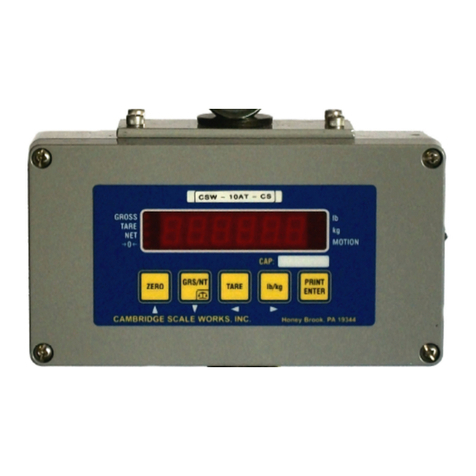
Cambridge Sensotec Rapidox 1100E Oxygen Analyser Instruction Manual
Contents
1Introduction .......................................................................................................... 1
2Features ................................................................................................................. 1
3Technical Specification........................................................................................ 2
4Precautions............................................................................................................ 2
5Warning ................................................................................................................. 2
6Rapidox Operating Instructions........................................................................... 3
6.1 Rapidox Analyser Menu System .................................................................. 4
6.2 Getting Started............................................................................................... 4
6.3 Display Behaviour ......................................................................................... 4
6.4 Pump Control................................................................................................. 5
6.5 Menu Access / Passwords ............................................................................. 5
6.6 Rapidox Calibration....................................................................................... 6
6.7 Alarms............................................................................................................ 8
6.8 Analogue Outputs.......................................................................................... 9
6.9 Setting the Display Units ............................................................................ 11
6.10 Setting the Display Options ........................................................................ 12
6.11 Internal Pressure Sensor ............................................................................. 12
6.12 Pressure Mode ............................................................................................. 12
6.13 Setting the Baud Rate .................................................................................. 13
6.14 Setting Date & Time..................................................................................... 13
6.15 Load Defaults ............................................................................................... 13
6.16 RS232 / RS485 Port...................................................................................... 14
6.16.1 RS232 Protocol ..................................................................................... 14
RS232................................................................................................................... 15
RS232................................................................................................................... 15
6.16.2 RS485 protocol ..................................................................................... 16
6.17 Sensor Lifetime and Replacing ................................................................... 16
6.18 Printing......................................................................................................... 16
7Rapidox Software Instructions........................................................................... 17
7.1 Software Installation ................................................................................... 17
7.2 Getting Started............................................................................................. 17
7.3 On-Screen Help ........................................................................................... 18
7.4 Configuration Page ...................................................................................... 18
7.5 Reconfiguring the Analyser ........................................................................ 19
7.5.1 Config 1 Screen ........................................................................................ 20
7.5.2 Config 2 Screen ........................................................................................ 21
7.5.3 Alarm Config Screen................................................................................ 22
7.6 On-Screen LCD ............................................................................................ 23
7.7 Remote Calibrating ...................................................................................... 23
7.8 Calibration Error Messages ......................................................................... 25
7.9 Software Utilities......................................................................................... 27
7.9.1 Setting Analyser Date and Time ............................................................. 27
7.9.2 Check for Updates.................................................................................... 27
7.9.3 Image Grabber .......................................................................................... 27
8Rapidox Data-Logging Software ......................................................................... 27
8.1 Introduction ................................................................................................. 27
8.2 Setting up the Data Logger.......................................................................... 28




























